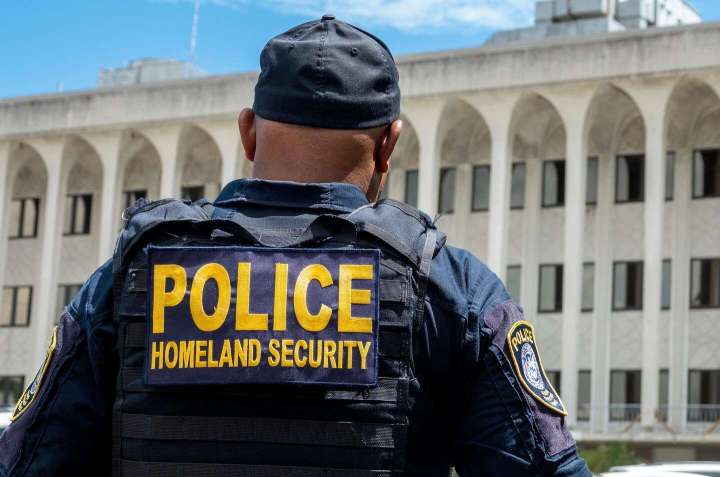Over the past week, there’s been a ton of legal back-and-forth over what the FBI took from former president Donald Trump’s Mar-a-Lago residence.
The major revelations from the investigation of what Trump took to Mar-a-Lago

Through all this, we’ve learned quite a bit about the investigation and how Trump is trying to defend himself. Some of the biggest revelations so far:
Trump had more than 300 documents containing classified information with him at his club
Trump took an astounding amount of classified material with him out of the White House to a club that could be accessed by a much broader swath of the public, including foreign nationals. Compare that to Hillary Clinton, whom the FBI investigated for using a private email server. It found 113 emails containing classified information in them — what then-FBI Director James Comey called “only a very small number” — with none nearly as secretive as what the government alleges Trump had.
The documents at Mar-a-Lago were collected in batches, first in a sweep by the National Archives in January. Archivists weren’t necessarily looking for classified information; they just wanted to collect any official documents that Trump took with him out of the White House, possibly in violation of the Presidential Records Act (which requires outgoing presidents to hand over presidential records to the government).
But when archivists found classified information amid the 15 boxes they got from Mar-a-Lago, they notified the FBI. Agents counted 184 classified documents, including top-secret documents — information that, if released, could “reasonably result in exceptionally grave damage to the national security,” the government said.
The FBI went to Mar-a-Lago with a subpoena in June, and got an additional 38 documents marked as classified, but investigators suspected there were more. They got a search warrant, and in August searched Mar-a-Lago and got 100 more documents marked with varying degrees of classification. This week they released a photo of some of what they said they found in Trump’s residence:
On Friday, the government released a detailed inventory of what was found in the 33 boxes. Many had newspaper and magazine clippings mixed in with classified material, according to the government’s search and tally:
The government says there is evidence its investigation has been obstructed
Trump has said that he and his lawyers have been “cooperating fully” with the government on the return of these documents. The government has maintained in several court filings that this is simply not true.
Consider the timeline: It took the National Archives six months of asking to get some documents back. The Justice Department went in with a subpoena this summer to try to get additional documents marked as classified that it suspected were still at Mar-a-Lago. But Trump’s lawyers prohibited the investigators from fully searching a storage room, the government alleged in a court filing this week. It also said there is evidence that some documents were removed from the storage room before the lawyers searched it. The FBI ended up having to get a warrant to search Mar-a-Lago in August to get the rest of the documents it said belonged to the government.
That’s more than 18 months of haggling, cajoling, and eventually resorting to force to get back records, including some that contained government secrets.
To what extent Trump was directly involved in any possible obstruction is unclear. The Washington Post’s Josh Dawsey, Carol Leonnig, Jacqueline Alemany and Rosalind Helderman reported that all this year, Trump resisted handing much of anything over to the government, to the point where his allies feared he was “essentially daring” the FBI to come after them.
The FBI says there’s probable cause to think several laws were broken
The search warrant and underlying affidavit mention three potential laws the government thinks have been violated. All relate to taking or hiding government documents, or obstructing a government investigation. None of the laws cited requires that information be classified — so simply taking material out of the White House and refusing to give it back could be enough for prosecution.
The government specifically cited a section of the Espionage Act that says a person in violation may have been in unauthorized possession of government secrets and they had “reason to believe [this information] could be used to the injury of the United States or to the advantage of any foreign nation.”
Trump has yet to clearly explain why he took the documents with him
His defense has shifted, and the government has punched major holes in what’s left of it.
Trump regularly claims on social media that, as president, he declassified the documents. But prosecutors pointed out in a court filing this week that Trump’s lawyers have never argued that in court, or in conversation or correspondence with the Justice Department. And many of the documents they found, according to the photo investigators shared of one box, still had bright yellow or red cover sheets declaring “Top Secret” or “Secret.”
We don’t know if Trump or his allies will get charged with anything
The government claims that Trump’s lawyers, at least, misled them about what documents remained at Mar-a-Lago. When investigators went there this summer, a Trump representative acting as custodian of records signed a statement certifying that all material with classification markings had been returned to the government.
That turned out not to be true. The Justice Department says it’s still investigating whether documents were mishandled and by whom, and whether laws were broken.
But the Justice Department faces a dilemma, report The Post’s Perry Stein, Alemany, Dawsey and Devlin Barrett: “What does it take to charge someone who once served as the commander in chief?” Legal experts say it’s a very high bar — the evidence would have to be even more compelling than in a typical case, and the alleged crime may have to be even more serious.






